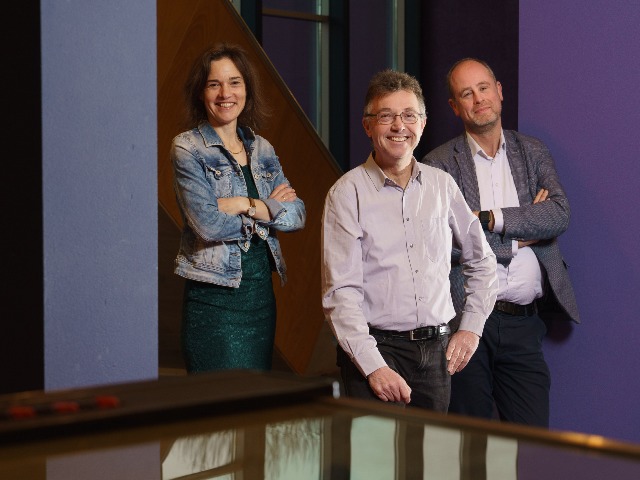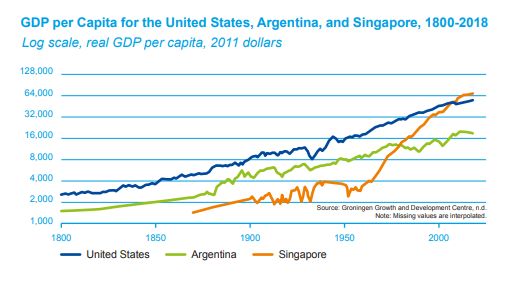Impact case: Groningen Growth and Development Centre: Databases
| Date: | 28 March 2024 |

Jutta Bolt, Robert Inklaar, Bart Los and Gaaitzen de Vries are the leading experts of the Groningen Growth and Development Centre (GGDC). Their focus is on the measurement and analysis of global economic welfare. The GGDC hosts a range of comprehensive open access databases. Since 2010, Google Analytics has recorded more than 3.4 million visits to the GGDC project websites.
The impact of the GGDC has been diverse and wide-reaching. The centre typically serves to provide information on macroeconomic trends that are the input for policy discussions. The GGDC’s strength is also demonstrated by an impressive record large, influential externally funded collaborative projects and numerous invited keynotes and lectures. Their expertise is sought regularly by policymakers from various ministries and influential organizations such as the World Bank, the UN and the OECD.
Underpinning Research
The approach by Bolt, Inklaar, Los, and de Vries is to use economic theory to improve the measurement of global economic welfare. They show that the large-scale construction of comprehensive public data can be combined with the analysis of key questions of scientific and societal importance. They lead the four main research pillars at the GGDC: Productivity (Inklaar), Value Chains (Los), Historical Development (Bolt) and Structural Change (de Vries). Bolt initiated the Maddison Project database, with Bart van Ark (University of Manchester) and Jan Luiten van Zanden (Utrecht University), bringing together contributions of prominent scholars from around the world into one dataset of historical measures of income and population from Roman times to present for a global set of countries.

Together with Robert Feenstra (University of California), Robert Inklaar leads the Penn World Table (PWT) project. The PWT includes measures of the economic size of countries and their comparative performance on a variety of social and economic dimensions, such as investment in education and physical capital. The economic size of countries in the PWT is measured using cross-country price data from the World Bank International Comparison of Prices program.
The principles and construction methodology led by Bart Los in World Input-Output Database (WIOD) underlie the OECD-WTO Trade in Value-Added database, the FIGARO database at Eurostat, and the Mixed Reality and Internet of Things (MRIOTs) at the Asian Development Bank. The Asian Development Bank (ADB) uses WIOD and extended the World Input-Output Tables by including developing Asian economies. That dataset now underlies its annual flagship report, the ADB Key Indicators.
To support research and good policy, UNU-WIDER (United Nations University World Institute for Development Economics Research) has partnered with the GGDC to construct the GGDC/UNU-WIDER Economic Transformation Database (ETD). The GGDC/UNU-WIDER Economic Transformation Database provides comprehensive, long-term, and internationally comparable sectoral data on employment and productivity in Africa, Asia, and Latin America. The ETD is led by Gaaitzen de Vries.

Testimonial from Max Roser Professor of Practice in Global Data Analytics at Oxford University and editor and director of Our World in Data
"Global poverty remains one of the largest problems in our world. To understand how we can make progress on this problem, we have to learn from the past. The Maddison Project Data and Penn World Tables from GGDC are absolutely essential to this research. They offer the best evidence over the long run and provide a global perspective. It allows us to understand how people around the world are leaving the deep poverty of the past behind, and by making clear that progress is achievable, it shows us what we can aspire to in the future. These resources are absolutely central for us at Our World in Data and our readers - 89 million unique visitors in 2021 alone - who are dedicated to tackling the world's biggest problems."
References
1. Feenstra, R. C., Inklaar, R., & Timmer, M. P. (2015). The next generation of the Penn World Table. American Economic Review, 105(10), 3150-82. Link to website
2. Inklaar, R., de Jong, H., Bolt, J., & van Zanden, J. L. (2018). Rebasing 'Maddison': new income comparisons and the shape of long-run economic development. GGDC Research Memorandum, GD-174. Groningen Growth and Development Centre, University of Groningen
3. Timmer, M. P., Dietzenbacher, E., Los, B., Stehrer, R., & De Vries, G. J. (2015). An illustrated user guide to the world input–output database: the case of global automotive production. Review of International Economics, 23(3), 575-605.

